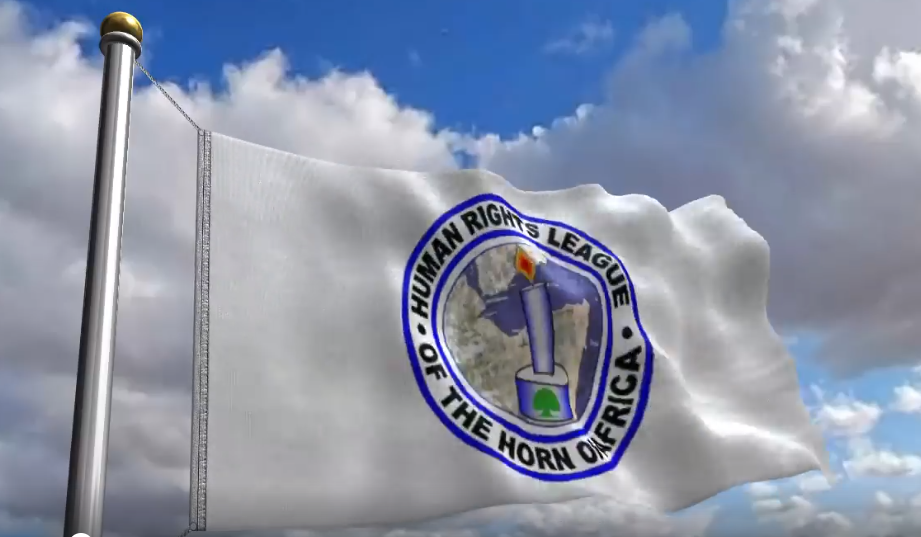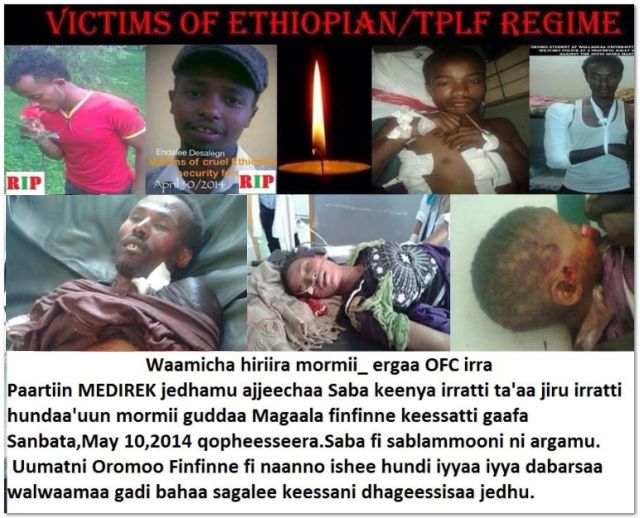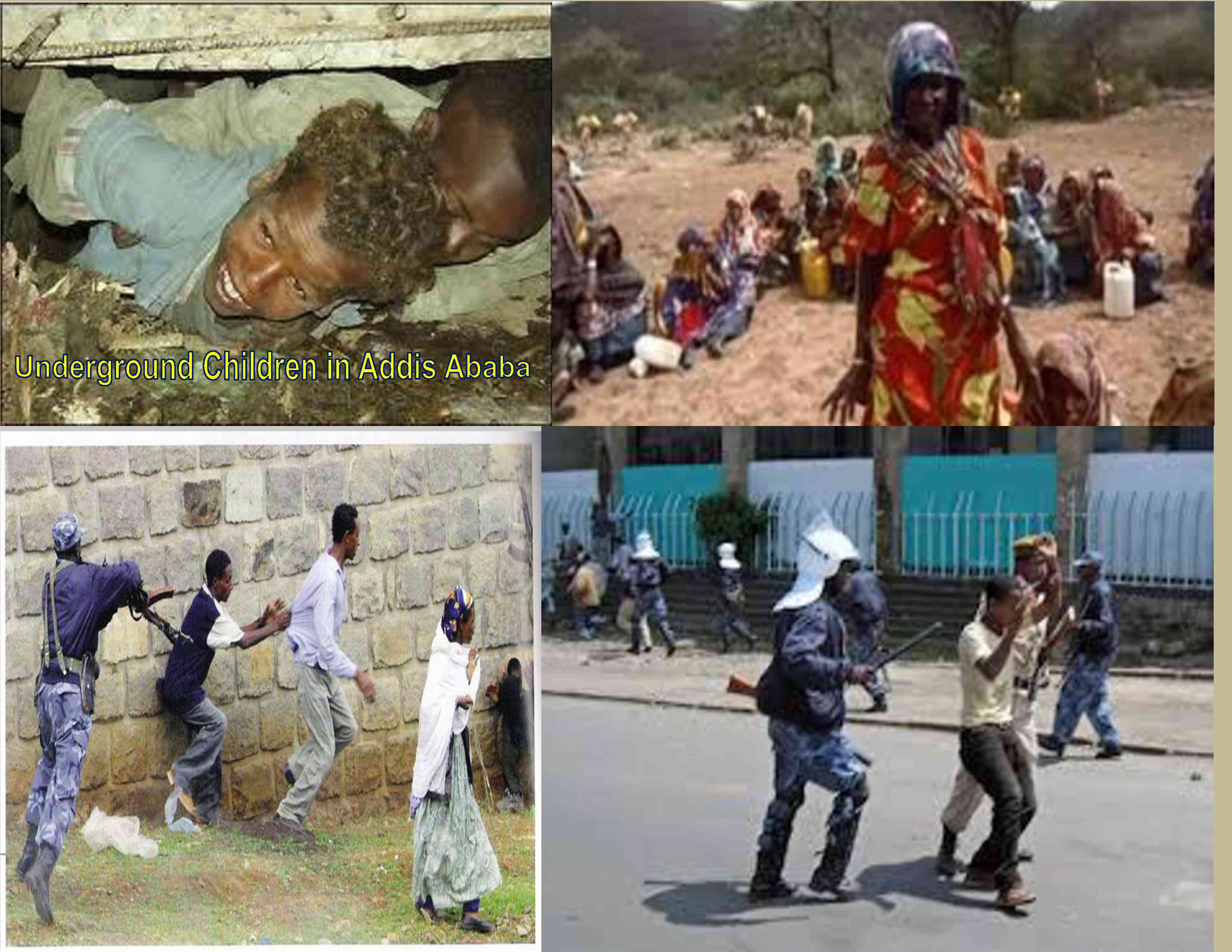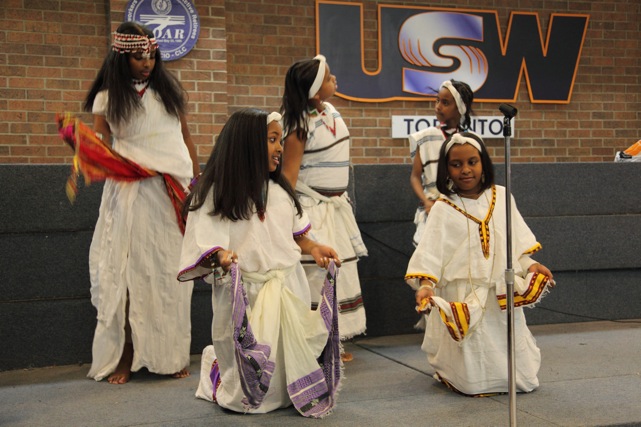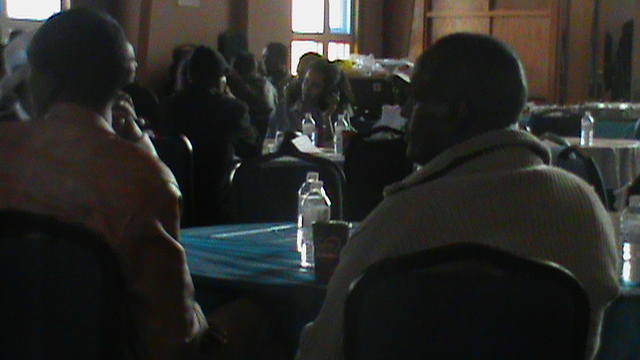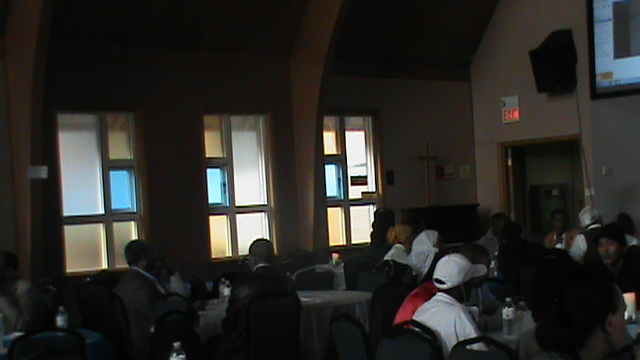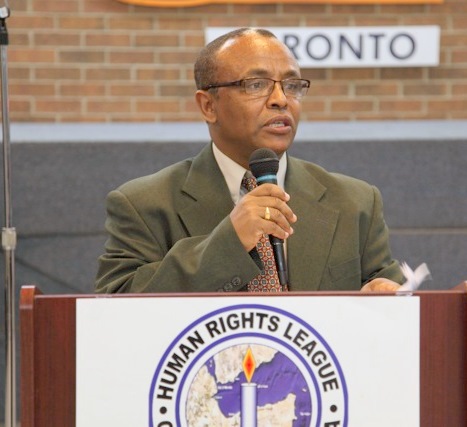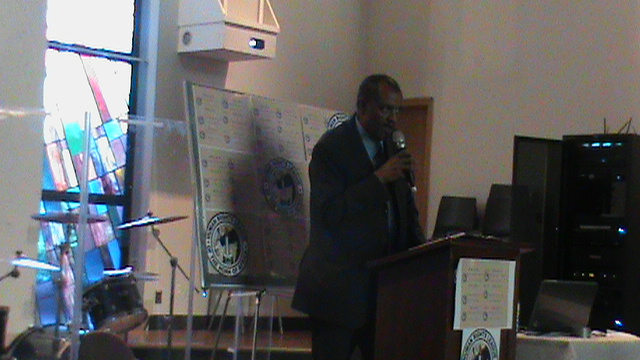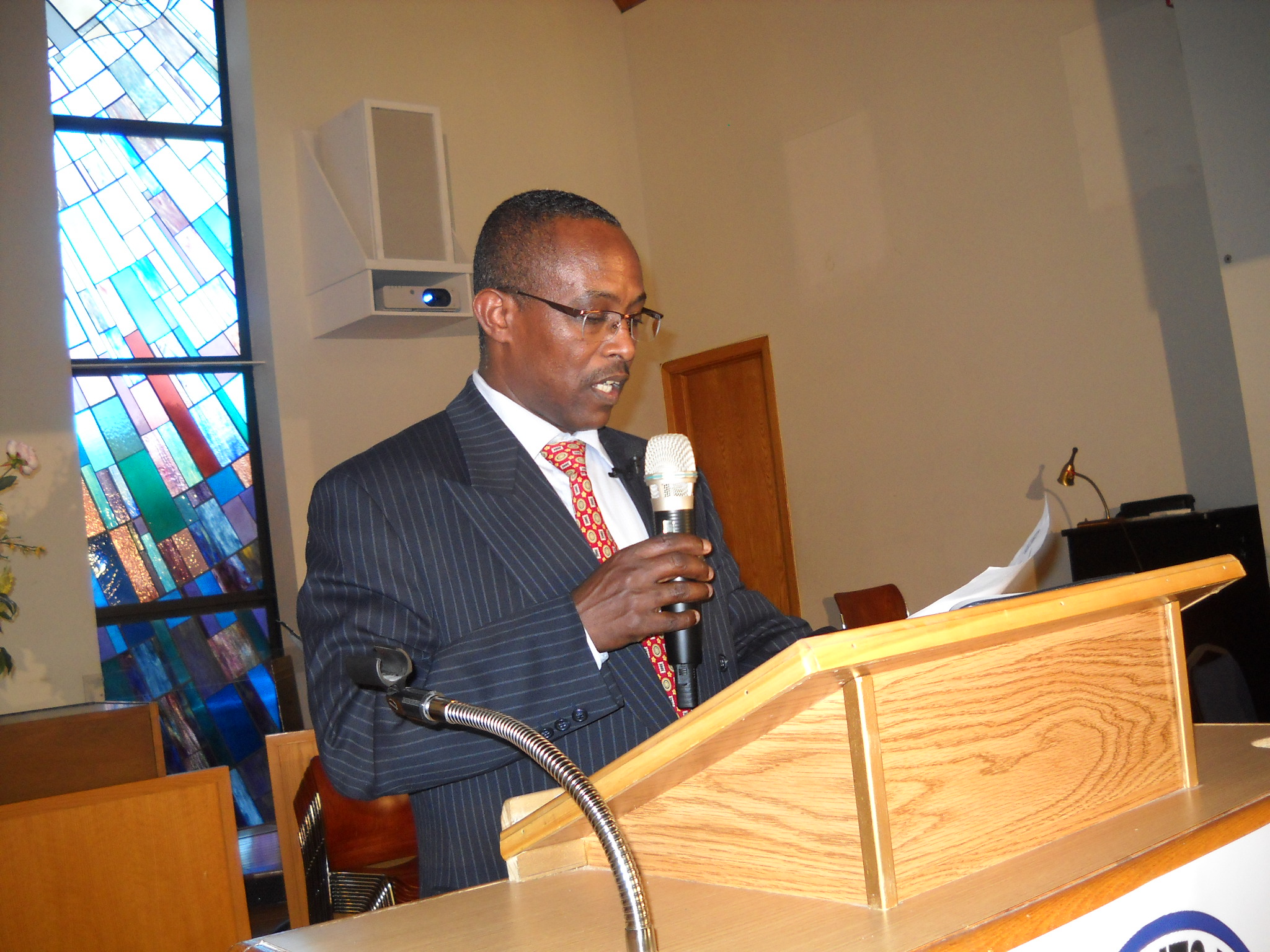April 2013
By Garoma B. Wakessa
Introduction:
Prior to the annexation of the Southern part of today’s Ethiopia (Oromo, Kambata, Sidama and others) into the Abyssinian heartland, the Abyssinians developed a communal system of landownership known as “rist.” The communal system “rist” applied to all Abyssinian lands. The “rist” system guaranteed an entitlement share to all the Abyssinian descendants (both male and female), and individuals had the right to use a plot of family land known as “rist” (Land). “Rist” was hereditary, inalienable, and inviolable. In all Abyssinian heartlands such as the provinces of Gojjam, Begemdir, and Semien (Gonder), Tigray and in the highlands of Eritrea, the major form of land ownership was the “rist” system.
When the Abyssinian King Menelik II declared war against the neighboring people of Southern Nations and Nationalities in the early 1880s to control the areas of the Southern Highlands of Oromo, Kambata, Sidama and Walaita and others, he had two major motives. The first motive was to establish ethno/national/racial hierarchy of Abyssinians over the people who were conquered. The second was to exploit human and natural resources in the conquered regions. After several years of bloody war in which more than five million Oromos and others were killed, Abyssinian forces gained the upper hand in 1889 and then controlled most of the southern highland regions.
With the help of firearms he had received from the European colonial powers, by 1900 Menelik II had succeeded in gaining full control over much of the area of present day Ethiopia. Since then the Abyssinians- the old Christian kingdom- have maintained control over their empire, Ethiopia. After they conquered the southern people, Abyssinians introduced a land ownership system which was different from the one they had in their Abyssinian home land. It was based on the Abyssinian old legal system “Fitehanegest”[1] (Ge’ez word, Law of the Kings) which is derived from an Old Testament land ownership system. One third of the conquered lands were given to the Orthodox/Coptic Church and one third to the state. As a result, the colonial conquest introduced a private land ownership and tenure system in the Southern highlands. In the Southern highlands, the Ethiopian government became the only body that granted land to their loyalists in the form of “gult” (grant land) fertile lands to state, church, political authorities, solders and collaborators. The introduction of a private land ownership system in the Southern Highlands made most of the Indigenous people’s serfs. According to Lata (1999)[2], in Oromia seventy percent of lands were owned by Abyssinian institutions and private individuals.
After the death of King Menelik (1913} the landlord-tenant relationship and the “rist” (communal land) system continued in the Abyssinian homelands under Emperor Haile Selassie (1930-1974) until a group of military (Derg) took over power in 1974. The Derg abolished the landlord-tenant relationship and launched a radical land reform program that covered the desolated parts of the country. The March 1975 decree ended both the “rist” and “gult” system. All the rural farm lands were declared to be state property and redistributed to the tillers[3], primarily based on the size of the family and quality of the land. The distribution of land attempted to create equity and fairness in land acquisition. The same decree also banned all kinds of land transactions and hiring wage laborers in rural areas to ensure that the tillers remained the beneficiaries of the land. The decree prohibited farmers from selling, mortgaging, leasing, and transferring the land allocated to them. The practical effect of this decree was to kill land rental and farm labor markets.
After the fall of the Derg regime in 1991, the EPRDF Government reaffirmed what the previous regime had established by constitutionalizing the land ownership, For example, Article 40(3) of the constitution states,
“The right of ownership of rural land and urban land, as well as of all natural resources, is exclusively vested in the state and the peoples of Ethiopia. Land is a common property of the nations, nationalities and peoples of Ethiopia and shall not be subject to sale or to other means of exchange”.
In the constitution adopted in 1995, some changes were made; these allowed temporary leases. The constitution guarantees the rights of peasants and pastoralists to free access to land and the right of individuals to claim compensation for improvements they make on land including the right to bequeath, transfer or remove such improvements when the right to use the land expires.
Through the constitution, farmers have the right to use the land indefinitely, lease it out temporarily to other farmers, and transfer it to their children. However, they cannot sell it permanently or mortgage it. Although the constitution has resolved some issues, it seems to have created other ambiguities and does not address some important matters. For example, given the scarcity of land, it is not clear how peasants’ rights of free access to land can be assured in practice, and how much land peasants are entitled to have. Those issues have been left to the regional governments to resolve and there have been, therefore, significant differences across the regions with respect to development of a regional land policy.
The Adverse effect of foreign investment in Ethiopia
The advance of industrial techniques in the nineteenth century, the growth of large scale industries and the concentration of economic power in the hands of a relatively small number of companies and banks provided the background from which have emerged the large business corporations of the twentieth- century, widely referred to today as Multi- National Corporations (MNCs) or what in United Nations terminology are aptly called Transnational Corporations (TNCs). During the Cold War period the domain of Transnational Corporations’ (TNCs) activity was largely confined to the west and only in those few developing countries that have political and military ties with the west. But the disintegration of the socialist bloc in the late 1980s has led to their unbridled sway over the world economy, including the economies of almost all African countries including Ethiopia. Before the current TPLF/EPRDF regime came into power in 1991, Ethiopia has been under a socialist- oriented military dictatorship for more than seventeen years. In those years the Ethiopian economic policy was tied to the socialist economic system which was owned by state- run corporations. After the collapse of the socialist government and its socialist economic policy, the EPRDF led an Ethiopian Transitional Government to declare its Economic policy as capitalist -oriented economic policy which encourages free markets and the absence of government intervention in the economy. To change the previously existing socialist economic system to a free market one, first the Ethiopian government implemented a program of land certification and registration. The program has been welcomed by many land holders. It has not, however, prevented public authorities from expropriating land and natural resources. In the meantime, a considerable number of peasants have had their lands expropriated and leased out to private investors, especially from the early 2000s when land for the floriculture business- which was booming at the time- was in high demand. There is no doubt those TNCs as the agents of modern globalization could play a significant role in the economic development of the developing countries if they operated within the framework of the hosting countries and international standard investment policies. But since their motive is profit they go beyond their mandate and exploit cheap labor and resources of the country where they operate
In many cases the role of TNCs runs counter to and is in conflict with the mandate of the state to protect and safeguard the human rights of its people. This conflict arises out of the divergence between the profit objectives of the TNCs and the socio-economic goals pursued by national governments. The government of Ethiopia expanded its activity of leasing lands to Asian and European floriculture investors by evicting small land holders without negotiation and compensation. In the meantime, the government developed in 2002 the first Poverty Reduction Strategy Document, known as the “Sustainable Development and Poverty Reduction Program” (SDPRP)[4]. The strategy emphases stimulating rural growth centered on holders of small agricultural lands which was considered at that time a pro-poor development plan. This program opened the door to investors to rush in and grab up the land on a large scale. The open door Rural Economic Development policy of Ethiopia of 2002 which favored mostly the investors, at the expense of the Ethiopian farmers, has created an improper relationship between investors and the small land holders (peasants). In brief, what we can see is a land system in which Ethiopians have only limited rights that are conditional and subjected to abrogation at any time, and in which they do not enjoy robust security of tenure. Immediately after the 2002 Poverty Reduction Strategy Document was adopted, in the name of ‘Globalization,’ a war has been waged by Transnational Corporations against the Ethiopian indigenous peoples in which millions of small farmers who were dependent on the farm land for a century have been forcefully evicted. Those who resisted the evictions in the South Gambela Region and in Central Oromia around Bakko Tibbe were arrested. The first Ethiopian Investment policy proclamation was issued by the Ministry of Agriculture and Rural Development (MOARD) in 2008[5]. Ethiopia’s new investment policy enabled the government to lease large numbers of acres of agricultural land in rural Ethiopia to domestic and Transnational Corporations at low cost. For many years, agriculture in Ethiopia has been dominated by small‐scale farmers who earn their livelihood primarily from subsistence rain‐fed agriculture with only limited use of modern technology and marketing The second phase of the PRSD process, known as “the Plan for Accelerated and Sustainable Development to End Poverty” (PASDEP)[6], covers the period from 2005‐2010 and is the current overarching policy framework in Ethiopia. Although the PASDEP builds upon most of the important strategic directions articulated in the former SDPRP, there has been a major shift from the previous policy direction in that it places an emphasis on economic growth with a greater focus on commercialization of agriculture with a strong push from the private sector. The PASDEP aims to accelerate economic growth in the country with the private sector playing a lead role. However, the Transnational Corporations dominated the government policy, making it beneficial to them and not good for the local inhabitants. This policy compromised the needs of people. For example, an Indian investor, Sannati Agro Farm Enterprises (Ethiopia Branch), exclaimed his happiness at getting fertile land for an unexpectedly low price lease by saying “They gave the land to us and we took it… This is green gold!”[7]
This has brought conflicts between the people and investors on the one hand, and between the people and the government on the other. Ethiopians want real economic development which could be achieved if the government facilitated investors coming in to help the people to be more self-reliant and independent from foreign intervention in the economy and politics of the country. The people want to participate in the decision making and protect their culture and life styles. The Ethiopian government has chosen to weaken the culture and identity of the indigenous people of Southern Ethiopia, in Omo region (Gambela, Suri, Surma and other groups) and Oromia region, by uprooting them from their heritage land and property and exposing them to acute poverty and starvation. In doing this, the Ethiopian Government- led by EPRDF/TPLF- is committing gross human rights violations against these indigenous people. The Ethiopian government is collaborating with exploiter companies and putting wealth and power before the interests and needs of these people.
The open door policy of the Ethiopian land lease policy- which we discussed above – is a giving away of land with very low capital investment to domestic and foreign businesses and this has been affecting thousands of farmers by removing them from their ancestral lands without their consent and compensation. The TPLF government’s open door policy which was drafted as investment legislation in 2004 was considered as one of its pillar development strategies to eradicate poverty in Ethiopia. However, currently what is happening in Ethiopia in the name of ‘development’ is directed largely against Ethiopian peoples’ interests, in which millions were uprooted without consultation and compensation from their ancestral lands. It violates the Ethiopian constitution, and the international indigenous people’s property owner’s rights. For example, the 1995 Constitution of the Federal Democratic Republic of Ethiopia [8] Article 40 (3, 4, 5) clearly confirms that land is the property of the nations and Nationalities and it states: Article 40 (3, 4, 5) clearly confirms land is the property of the nations and Nationalities and states as follow: 40 (3): Land is a common property of the Nations, Nationalities and Peoples of Ethiopia and shall not be subject to sale or to other means of exchange. 40(4): Ethiopian peasants have the right to obtain land without payment and protection against eviction from their possession. With respect to pastoralists affected by the land sell off, paragraph 40 (5): Ethiopian pastoralists have the right to free land for grazing and cultivation as well as the right not to be displaced from their own lands.
The UN Declaration on the Rights of Indigenous Peoples, which Ethiopia signed in 2007, making it a legally binding document, clearly states in Article 26(1 &2):
26(1): Indigenous peoples have the right to the lands, territories and resources, which they have traditionally owned, occupied or otherwise used or acquired. And paragraph 26(2): Indigenous peoples have the right to own, use, develop and control the lands, territories and resources that they possess by reason of traditional ownership or other traditional occupation or use, as well as those which they have otherwise acquired. The declaration also outlines compensation measures for landowners, Article 28(1&2): 28(1): Indigenous peoples have the right to redress, by means that can include restitution or, when this is not possible, just, fair and equitable compensation, for the lands, territories and resources which they have traditionally owned or otherwise occupied or used, and which have been confiscated, taken, occupied, used or damaged without their free, prior and informed consent. And 28(2): Unless otherwise freely agreed upon by the peoples concerned, compensation shall take the form of lands, territories and resources equal in quality, size and legal status or of monetary compensation or other appropriate redress.
These articles make clear that without the consent of indigenous people, leasing their land and evicting them from their homes is a violation of their rights. Implementation and respect for the articles is required, and should be demanded of the ruling TPLF/EPRDF government of Ethiopia, investors and by the donor countries. Another international document, the Universal Declaration of Human Rights (UNDH) Article 17(1&2) [9] and the UN Declaration on the right of indigenous people Article 10[10], explain the rights of the Indigenous people not to be removed forcefully from their lands. The UDHR Article 17(1) states, “Everyone has the right to own property alone as well as in association with others, and 17(2) “No one shall be arbitrarily deprived of his property.” The UN Declaration on the right of indigenous people Article 10 states: “Indigenous peoples shall not be forcibly removed from their lands or territories. No relocation shall take place without the free, prior and informed consent of the indigenous peoples concerned and after agreement on just and fair compensation and, where possible, with the option of return.” The TPLF/EPRDF government has ignored its obligations and cheaply transferred millions of hectares of land from Gambela , Oromia, Metekel and Benshangul to foreign companies by evicting indigenous people forcefully ; some investors have called this process “the best deal of the century” Today, using this opportunity (“the best deal of the century”), companies from Asia (India, China, and Pakistan) and the Middle East are exhausting the resources of Ethiopia at breakneck speed. This is being done in collaboration with the multinational and international financial institutions. This has led to them being in control of resources on which the indigenous people in Ethiopia have depended for a living for centuries. If the resource exploitation by the above mentioned Transnational Corporations continues at the current rate of speed, it can only lead to the complete exhaustion of resources which adversely affect the lives of millions of Ethiopians already living a subsistence level existence. The Ethiopian government and the Chinese, Indian, Pakistani and other Transnational Companies that are operating on farmland and manufacturing industries in Ethiopia are committing flagrant human rights violations against local people for not adhering to the UN foreign corporation’s investment polices (The UN Global Compact and Transnational Corporations 1999 )[11]. The UN Global compact and Transnational Corporations UN consist of substantive rules of engagement for transnational corporations (TNCs) within the global economy. Its guidelines urge good corporate conduct:
“Human Rights: Business should support and respect the protection of international human rights; and make sure they are not complicit in human rights abuses,
Labor Rights: Business should uphold the freedom of association and the effective recognition of the right to collective bargaining; the elimination of all forms of forced and compulsory labor; the effective abolition of child labor; and the elimination of discrimination in respect of employment and occupation,
Environment: Business should support a precautionary approach to environmental challenges; undertake initiatives to promote greater environmental responsibility; and encourage the development and diffusion of environmentally friendly technologies.
Anti- corruption: Business should work against all forms of corruption, including extortion and bribery” It is mandatory for all Transnational Corporations to comply with the UN standard regulations to operate in a society.
Transnational Corporations that fail to abide by the above mentioned obligations of UN documents are subject to criminal penalties according to the UN Social Responsibility of Transnational Corporations 1999[12] which states: “Compliance with legal requirements constitutes a mandatory minimum standard for corporate conduct. Corporate entities are legal persons granted the right to exist and operate within a society, subject to the laws of that society. Violations of the law will subject the firms to civil or criminal penalties and can result in revocation of the corporation’s license to operate”[13]. Although legal codes of conduct are in place, none of the Transnational Corporations currently operating in Ethiopia respect the human rights and the labor rights of the indigenous citizens or comply with the International code of conduct to preserve the environment from pollution. For example, Chinese and Indian companies that invested in farming or manufacturing industries are importing workers from their countries instead of hiring Ethiopians, thereby infringing the UN Code of Conduct for Transnational Corporate. These companies rob and suck away the surplus resources of the country to feed the economies of their countries while millions of Ethiopians are suffering from acute starvation, hunger and diseases, because their land has been taken away by the government recklessly and given to foreigners with no concern being taken for their lives. Flower- growing companies in central Showa around Bakko, Ziway and West Showa around Ambo and Midrock Gold Mining Company in Adola , Oromia are dumping hazardous and banned toxic chemicals into the rivers which the local people are using for drinking water. Thousands of their cattle have died and the health of many citizens has been affected.
It is very clear that dispossession of land and evicting the indigenous people from their land is a human rights violation. As mentioned above, the Ethiopian empire was built after a bloody and protracted war led by the Abyssinian kings (Amahara and Tigray) in which the population of the indigenous people was reduced to half and in some cases to third. Hence, the relationships between Abyssinians and the indigenous people is that of a colonial power to those it conquers and rules. The experiences of the indigenous people in Ethiopia are similar to those of the Irish people under British rule or Ukrainians under Russian rule.
Since the Ethiopian state began, the power has been in the hands of Abyssinians. As you can see in the chart below, most of the leased lands belong to the colonized people. This makes the issue of land leasing an issue of racial/national/ethnic relation and necessitates our looking at the matter from the framework of collective rights and tackling it as an act of racism and collective violence.
Lands leased by the Government to Investors for 30-99 year periods from 2000 – 2011
| No | Region | Land Size (in hectares) | % |
| 1 | Gambela | 535,000 | 45.2 |
| 2 | Oromia | 380,000 | 32.1 |
| 4 | Benshangul | 176,500 | 14.9 |
| 5 | SNNP | 55,000 | 4.6 |
| 6 | Afar | 20,000 | 1.7 |
| 7 | Amhara | 18,000 | 1.5 |
| 8 | Tigray | 0 | 0 |
| Total | 1184500 | 100% |
Source: Large Scale Land Transfers In Ethiopia, Dessalegn Rahmato 2011 Addis Ababa
Conclusion: the United Nations and the world community should not turn a deaf ear to such gross human rights violations taking place against an innocent and defenseless society. I believe that the UN should move forward to enforce its regulations and the codes of conduct it has issued at different times in order to defend civilians against the human rights violations of states and Transnational Corporations.
//
[1] Wikipedia, the free encyclopedia, http://en.wikipedia.org/wiki/Fetha_Nagast
[2] Leenco Leta (1999) The Ethiopian state at the crossroads: decolonization and democratization or disintegration? The Red Sea Press, New Jersey
[3] Rural and Urban Land Reform in Ethiopia, John M Cohen & Peter M. Koehn, http://www.jlp.bham.ac.uk/volumes/14/cohenkoehn-art.pdf
[4] Ethiopia Sustainable Development and Poverty Reduction Program, Federal Democratic Republic of Ethiopia (FDRE), Ministry of Finance and Economic Development (MOFED) July, 2002, Addis Ababa, Ethiopia, http://www.imf.org/external/np/prsp/2002/eth/01/
[5] Ministry of Agriculture and Rural Development (MOARD) 2008, Agricultural Investment Potential of Ethiopia, Addis Ababa, November 2008 (www.moard.gov.et)
[6] Federal Democratic Republic of Ethiopia ,
[6]PLAN FOR ACCELERATED AND SUSTAINED, DEVELOPMENT TO END POVERTY (2005/06-2009/10)
[6]Ministry of Works and Urban Development ,Plan for Urban Development and Urban Good Governance
[7] Ethiopia: Land rent contractual agreement made between Ministry of Agriculture and Rural Development and Sannati Agro Farm PLC http://farmlandgrab.org/uploads/attachment/11Sannati-Agreement.pdf
[8] Constitution of the Federal Democratic Republic of Ethiopia/ 1995 , ttp://www.wipo.int/wipolex/en/text.jsp?file_id=193667
[9] UNDH, http://www.un.org/en/documents/udhr/index.shtml
[10] United Nations Declaration on the rights of indigenous ,[10]Peoples, http://www.un.org/esa/socdev/unpfii/documents/DRIPS_en.pdf
[11] The United Nations [11]and Transnational Corporations (How the UN Global Compact Has Changed the Debate,), http://www.sagepub.com/upm-data/47439_chp_3.pdf
[12] United Nations Conference on Trade and Development, Division on Investment, Technology and Enterprise Development, TRANSNATIONAL CORPORATIONS, VOLUME 8 NUMBER 1 APRIL 1999, http://unctad.org/en/Docs/iteiit12v8n1_en.pdf#page=151
[13] THE SOCIAL RESPONSIBILITY OF TRANSNATIONAL CORPORATIONS 1999, http://unctad.org/en/Docs/poiteiitm21_en.pdf
